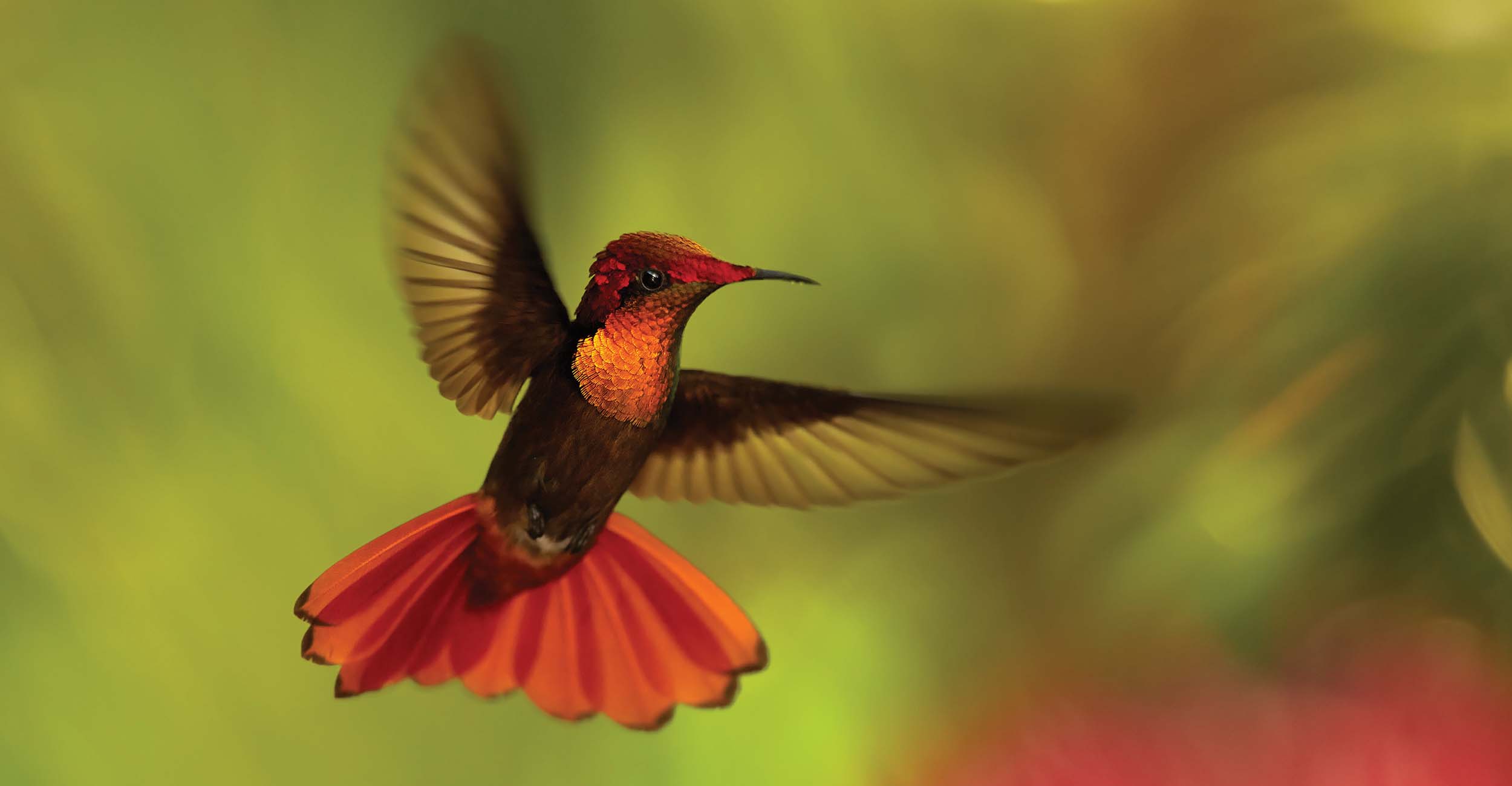
NEXRAD radar can follow — and perhaps end up preventing — bird collisions
Friday, September 17, 2021
Media Contact: Harrison Hill | Research Communications Specialist | 405-744-5827 | harrison.c.hill@Okstate.edu
New research conducted by Oklahoma State University scientists and published in the Journal of Applied Ecology indicates weather radars can predict more than the next storm: They are effective tools for predicting bird collisions.
As many as 1 billion birds die each year from colliding with windows or buildings. The victims are native species — a diverse array of birds in the North American avifauna, such as warblers, thrushes, hummingbirds, sparrows and orioles, that fly into structures during spring or fall migrations. Declining populations of native birds are alarming many bird conservationists, who are searching for ways to prevent these fatalities.
“A lot of the birds that collide are nocturnal migrants that fly primarily at night because they’re so small and have such a high metabolism that they’d overheat in the daytime,” said Scott Loss, an OSU associate professor of natural resource ecology and management. “The effects of light pollution in cities and around tall buildings can attract and confuse these migrating birds, causing them to collide.”
Many birds travel overnight, using the stars and other orientation cues, such as sensing
Earth’s magnetic field, but buildings and other tall structures can be difficult to identify. This is especially true for the disorienting power of light pollution coupled with the deadly effects of window glass. Loss has studied bird collisions extensively for the past several years, and this new investigation, supported by OSU Ag Research, is the first to involve a weather radar system. Birds fly high enough in the atmosphere and in large enough flocks that their activity is detected by radar beams intended for tracking aircraft, precipitation and storms.
“Radars have been used to study bird migration for more than 50 years,” Loss said. “Migrating birds look different than rain and storms. Most meteorologists have a way to turn off that ‘clutter’ and filter it out to focus on precipitation, but biologists have learned they can do the opposite.”
When precipitation and weather are filtered out, scientists can use radar technology to monitor dust, insects and birds. As a doctoral student in the Department of Natural Resource Ecology and Management from 2016 to 2020, Jared Elmore monitored bird activity on NEXRAD radar available to the public from the National Weather Service.
Now a research associate at Mississippi State University, Elmore’s dissertation focused on several bird conservation issues. As a participant in the Knopf Doctoral Fellowship Program in Avian Ecology and Conservation, he targeted Stillwater by collecting data from radar sites near Enid, Tulsa and Oklahoma City.
“I downloaded the radar files through Amazon Cloud Services and learned how to code
to identify the bird signatures on screen,” he said.
Elmore’s radar data was aligned with bird carcass counts documented by doctoral student
Corey Riding and associate professor Tim O’Connell. For two years, April through October,
Riding conducted daily surveys at 16 designated buildings on the OSU campus and in
Stillwater.
“Studying collisions is important because it’s such a large mortality source for these birds,” Riding said.
Other co-authors outside OSU included Kyle Horton of Colorado State University and Andrew Farnsworth of Cornell University. Both are international leaders in using radar images to study and predict bird migration patterns.
“The analytical approaches developed by our collaborators, such as the method to filter out objects that were unlikely to be birds, were crucial to the research,” Loss said.
The birds detected on night radar scans directly correlated with collision fatalities Riding observed in Stillwater the next morning.
“We can calculate the migration traffic rate by estimating the number of birds that are crossing an imaginary line over the course of a night,” Loss said. “The nights with heavy migration traffic on radar resulted in more bird collision victims found at daybreak.”
The weather radar marvel of bird collision research was featured in the March issue of Discover magazine, and the group plans to share its findings with conservationists nationwide. Loss and Farnsworth also are working together on a bird-window collision project known as Lights Out Texas.
The coalition of conservation nonprofits, universities and governmental organizations partners with homeowners, building managers and municipal leaders to reduce light pollution and bird collisions in the downtown districts of major Texas cities.
Photos By: Todd Johnson and Shutterstock
Story By: Gail Ellis | gail.ellis@okstate.edu
